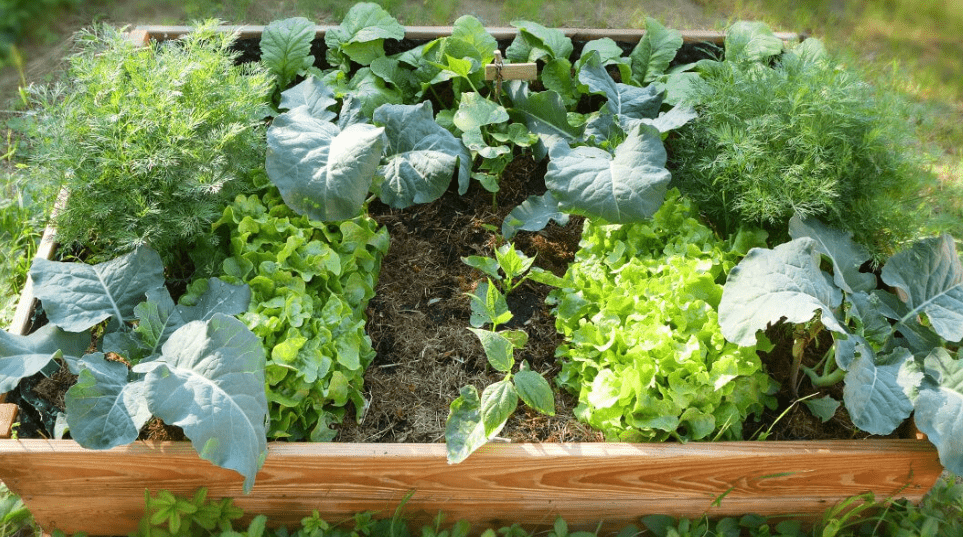
Essential Tips for Planting Starter Vegetable Plants
Whether you’re a seasoned gardener or just starting out, planting starter vegetable plants can be a rewarding and fulfilling experience. But in order to ensure a successful harvest, it’s important to know the essential tips for proper planting. From soil preparation to watering and sunlight requirements, this post will provide you with the necessary information to help you grow your own vegetables at home. So grab your gardening gloves and let’s get started!
Table of Contents
ToggleChoosing the Right Starter Veg Plants
A. List of recommended starter veg plants (e.g., tomatoes, lettuce, Zucchini, herbs)
When it comes to choosing starter vegetable plants for beginners, there are a few options that are well-suited for those new to gardening.
1. Tomatoes: Tomatoes are a popular choice for beginners because they are relatively easy to grow and can be quite prolific. They also come in a variety of sizes, shapes, and colors, making them a fun and versatile option for any garden.
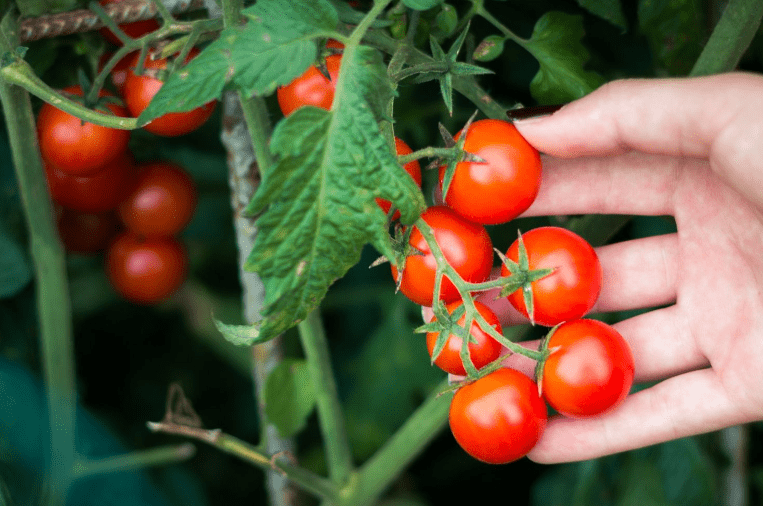
2. Zucchini: Zucchini is a fast-growing and productive plant, making it a great choice for beginners. It also tends to be quite resilient and forgiving, making it a good option for those who may not have a green thumb.
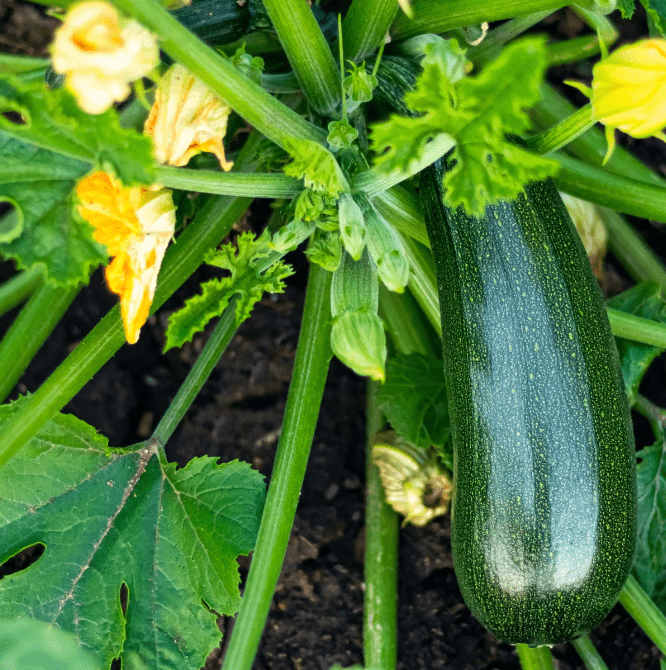
3. Green Beans: Green beans are a great choice for beginners because they are relatively low-maintenance and can produce a bountiful harvest. They also come in both bush and pole varieties, making them suitable for a variety of garden sizes.
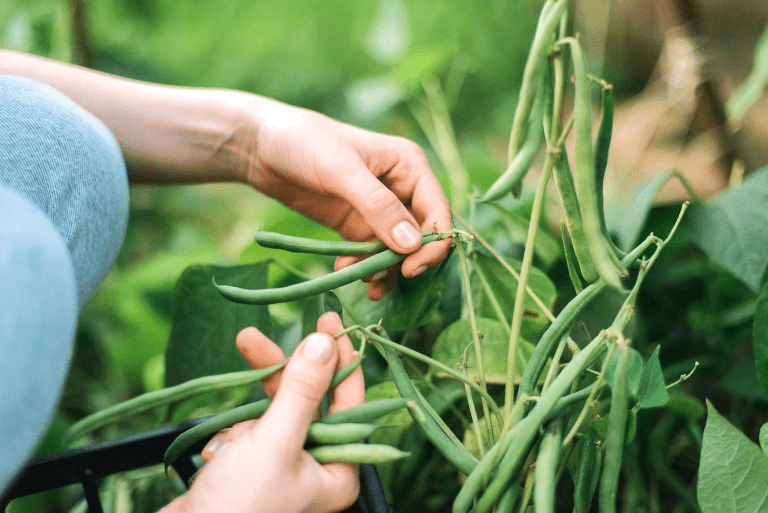
4. Lettuce: Lettuce is a quick and easy crop to grow, making it a good choice for beginners who want to see results relatively quickly. It is also quite versatile, as there are many different varieties to choose from, allowing for a variety of flavors and textures in the garden.
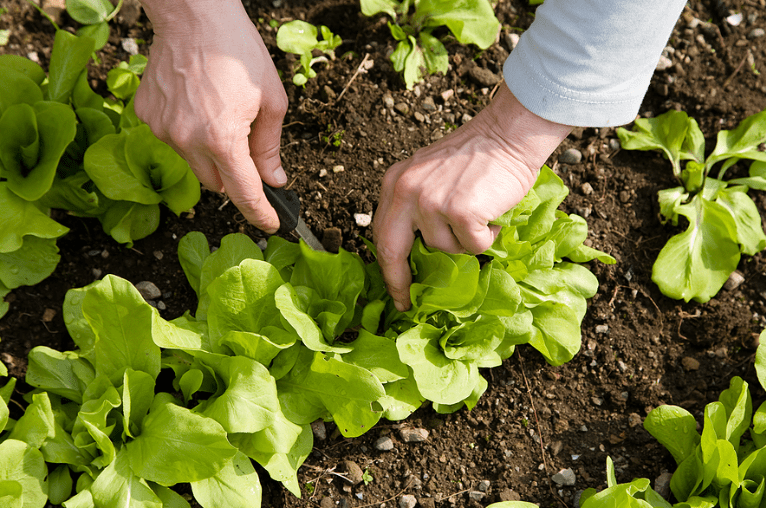
Overall, these plants are recommended for beginners because they are relatively easy to grow, resilient, and can provide a bountiful harvest with relatively little effort.
B. Factors to consider (climate, soil type, space available, personal preferences)
When it comes to planting starter vegetable plants, there are a few key factors to consider. First, think about the climate in your area and choose plants that are well-suited to the conditions. Next, consider the type of soil in your garden and make any necessary amendments to ensure that it is suitable for growing vegetables. Additionally, think about the space available in your garden and choose plants that will fit well in the available area. Finally, consider your personal preferences and choose plants that you enjoy eating and are excited to grow. By taking these factors into account, you can set yourself up for a successful and enjoyable gardening experience.
Preparing Your Garden Space
A. Choosing the right location (sunlight, protection from wind)
When preparing your garden space for planting starter vegetable plants, it’s important to choose the right location. Consider the amount of sunlight the area receives and choose a spot that gets at least 6-8 hours of sunlight per day for most vegetables. Additionally, consider protection from strong winds, as this can damage delicate seedlings. Choosing a location with some natural wind protection, such as a fence or shrubbery, can help ensure the health and success of your plants. By carefully selecting the location for your vegetable garden, you can create the optimal growing environment for your starter plants.
B. Soil preparation (testing soil pH, adding compost or organic matter)
To prepare your garden space for planting starter vegetable plants, it’s essential to prepare the soil. Start by testing the soil pH to determine its acidity or alkalinity. Most vegetables prefer a slightly acidic soil with a pH between 6.0 and 7.0. If your soil’s pH is out of this range, you can adjust it by adding lime to raise the pH or sulfur to lower it.
In addition to testing the soil pH, it’s important to add compost or organic matter to improve soil fertility and structure. Incorporating compost or organic matter into the soil can improve its ability to retain moisture and nutrients, which is essential for the health and growth of your plants. Work the compost or organic matter into the soil to a depth of at least 6-8 inches to ensure it is well mixed and distributed.
By testing the soil pH and adding compost or organic matter, you can create an ideal growing environment for your starter vegetable plants and set them up for success.
C. Creating garden beds or using containers (advantages and disadvantages of each)
Creating garden beds and using containers both have their advantages and disadvantages. Garden beds provide more space for plants to spread out and grow, and they allow for a larger variety of plants to be grown in the same area. They also provide better soil drainage and aeration. However, garden beds require more space and can be more labor-intensive to set up and maintain.
On the other hand, containers are great for smaller spaces and can be placed on patios, balconies, or other areas with limited space. They also allow for better control of soil conditions and make it easier to move plants around as needed. However, containers may require more frequent watering and can limit the types of plants that can be grown due to space constraints.
Ultimately, the choice between garden beds and containers depends on the specific needs and limitations of your gardening space. Both options can be successful for growing vegetables, so it’s important to consider your individual situation and choose the option that best suits your needs.
Seedlings vs. Seeds
A. Pros and cons of starting with seedlings versus seeds
Starting with seedlings has the advantage of saving time and providing a head start on the growing season. Seedlings are already established plants and can be planted directly into the garden, allowing for quicker harvests. However, seedlings can be more expensive to purchase and may have limited variety available.
On the other hand, starting with seeds allows for a wider variety of plants to choose from and can be more cost-effective. It also provides a sense of satisfaction and accomplishment from nurturing the plants from the very beginning. However, starting from seeds requires more time and effort, as they need to be germinated and grown into seedlings before being transplanted into the garden.
Ultimately, the choice between seedlings and seeds depends on factors such as budget, time, and preferred varieties. Both options can be successful for growing vegetables, so it’s important to consider your individual situation and choose the option that best suits your needs.
B. Tips for starting seeds indoors (seed trays, grow lights, proper watering)
Starting your vegetable plants from seeds can be a rewarding experience, but it does require some extra care and attention. To start, you’ll need to use seed trays or small containers filled with potting soil to plant your seeds. Make sure to keep the soil moist, but not waterlogged, and provide enough warmth and sunlight to encourage germination. If you don’t have access to natural sunlight, you can use grow lights to provide the necessary light for your seedlings to thrive. It’s important to water your seedlings carefully, making sure not to overwater or let the soil dry out completely. By following these tips and providing the right conditions, you can successfully grow your own vegetable plants from seeds indoors.
C. Transplanting seedlings to the garden (timing, hardening off process)
When it comes time to transplant your seedlings into the garden, timing and the hardening off process are crucial for their success. It’s important to wait until your seedlings have developed strong roots and several sets of leaves before moving them outdoors. This typically takes about 4-6 weeks after germination.
Before transplanting, you’ll need to gradually acclimate your seedlings to the outdoor environment through a process called hardening off. This involves exposing your seedlings to the outdoor conditions for a few hours each day, gradually increasing the time over the course of a week. This helps the seedlings adjust to the sun, wind, and temperature changes they’ll experience in the garden.
Once your seedlings are ready, choose a cloudy or overcast day to transplant them as this reduces the stress on the plants. Make sure to water the seedlings well before transplanting and gently remove them from their containers. Dig a hole in the soil, place the seedling in, and gently pat the soil around the base of the plant.
By following these tips and providing the right timing and care, you can successfully transplant your seedlings into the garden and watch them grow into thriving vegetable plants.
Planting Techniques
A. Spacing and depth guidelines for different starter veg plants
When planting your starter vegetable plants, it’s important to consider spacing and depth guidelines for each type of plant. For example, plants like tomatoes and peppers should be planted deeper than they were in their seedling pots, while plants like lettuce and spinach should be planted at the same depth as their original containers. As for spacing, make sure to follow the recommendations on the plant tags or seed packets to ensure that your plants have enough room to grow and thrive. Adequate spacing allows for proper airflow and reduces the risk of disease. By following these guidelines, you can set your starter vegetable plants up for success and enjoy a bountiful harvest.
B. Companion planting tips (which plants grow well together)
Companion planting is a great way to maximize the health and yield of your vegetable garden. Some plants have natural affinities for each other and can benefit from being grown together. For example, planting basil near tomatoes can improve the tomatoes’ flavor and repel pests, while planting marigolds near other vegetable plants can help deter harmful insects. It’s also important to consider which plants should not be grown together, as some plants can inhibit each other’s growth. Researching and following companion planting tips can help create a thriving and harmonious garden. By taking the time to consider which plants grow well together, you can create a more resilient and productive garden.
Watering and Fertilizing
A. Proper watering techniques (how much, how often, best time of day)
Proper watering is essential for the health of your plants. It’s important to water deeply and infrequently to encourage strong root growth. The amount and frequency of watering will depend on the type of plant, soil type, and weather conditions. Generally, it’s best to water in the early morning or late evening to minimize evaporation and ensure the water reaches the roots. Additionally, using a soaker hose or drip irrigation system can help deliver water directly to the roots, minimizing water waste. When it comes to fertilizing, it’s important to use a balanced fertilizer and follow the recommended application rates for each type of plant. Over-fertilizing can lead to nutrient imbalances and harm the plants, so it’s important to follow guidelines and monitor the health of your plants.
B. Mulching to retain moisture and reduce weeds
Mulch helps to retain moisture in the soil, reducing the need for frequent watering. It also helps to suppress weed growth, which can compete with plants for water and nutrients. When applying mulch, be sure to leave some space around the base of the plant to prevent rot and disease. Overall, taking these steps to water, fertilize, and mulch your plants properly will help to encourage strong and healthy root growth, leading to thriving and vibrant plants in your garden.
c. Types of fertilizers and how to use them (organic vs. synthetic)
There are two main types of fertilizers: organic and synthetic. Organic fertilizers are made from natural materials such as compost, manure, and bone meal. They release nutrients slowly and improve the structure of the soil. Synthetic fertilizers are made from chemical compounds and provide a quick release of nutrients. When using fertilizers, it’s important to follow the instructions on the packaging, as over-fertilizing can harm plants. It’s also important to consider the needs of the specific plants in your garden when choosing a fertilizer. Overall, using fertilizers properly can help to promote healthy growth and vibrant blooms in your garden.
Pest and Disease Management
A. Common pests and diseases affecting starter veg plants
Common pests and diseases affecting starter veg plants include aphids, cutworms, and powdery mildew. It’s important to regularly inspect your plants for signs of pest or disease damage and take appropriate action. This can include using organic or synthetic pesticides, as well as cultural and biological controls. It’s also important to practice good garden hygiene, such as removing any infected plant material and maintaining proper spacing between plants to prevent the spread of disease. By being proactive in pest and disease management, you can help ensure the health and productivity of your starter vegetable plants.
B. Natural and chemical control methods
Natural control methods for pests and diseases in starter veg plants include using beneficial insects like ladybugs and praying mantises, as well as introducing nematodes or fungi that target specific pests. Additionally, companion planting can help repel pests and attract beneficial insects. Chemical control methods include using insecticidal soaps, horticultural oils, and synthetic pesticides. It’s important to carefully follow the instructions on any chemical products and to consider the potential impact on the environment and non-target organisms. Integrated pest management, which combines both natural and chemical control methods, is often recommended for effective pest and disease management in starter veg plants.
Maintenance and Care
A. Regular garden maintenance tasks (weeding, pruning, thinning)
Regular garden maintenance tasks for starter veg plants include wedding, pruning, and thinning. Weeding helps prevent competition for nutrients and space, while pruning and thinning promote plant health and growth. It’s important to regularly remove any dead or diseased plant material to prevent the spread of pests and diseases. Additionally, proper watering and fertilization are essential for the maintenance of healthy starter veg plants. Regularly monitoring the plants for any signs of pests or diseases and addressing them promptly is also crucial for maintaining a successful and thriving vegetable garden.
B. Monitoring plant health and growth (signs of stress or nutrient deficiencies)
Monitoring plant health and growth is a crucial part of maintaining a successful vegetable garden. It’s important to regularly check for any signs of stress or nutrient deficiencies in your plants. This can include yellowing or browning of leaves, stunted growth, or wilting. Addressing these issues promptly can help prevent further damage and promote healthy plant growth. Regular monitoring also helps to identify any potential pest or disease problems early on, allowing for quick and effective treatment. Overall, staying vigilant and proactive in monitoring plant health and growth is essential for maintaining a thriving vegetable garden.
C. When and how to harvest your vegetables
Knowing when and how to harvest your vegetables is essential for enjoying the best flavor and quality from your garden. The timing of harvest will depend on the specific type of vegetable you are growing, as well as environmental factors such as temperature and weather conditions. Generally, it’s best to harvest vegetables when they are at peak ripeness, which often means they are at their best flavor and texture.
When harvesting, it’s important to use sharp and clean garden shears or a knife to avoid damaging the plant. Carefully remove the vegetables from the plant, taking care not to bruise or injure the surrounding foliage. It’s also important to handle the harvested vegetables gently to avoid any bruising or damage.
For vegetables like tomatoes and cucumbers, it’s best to harvest them when they are fully ripe and have reached their full size. On the other hand, leafy greens like lettuce and spinach can be harvested when they are young and tender for the best flavor. Root vegetables like carrots and radishes can be harvested when they have reached a suitable size for eating.
Overall, paying attention to the specific harvest times and techniques for each type of vegetable will ensure that you enjoy the best flavor and quality from your garden produce.
Troubleshooting Common Problems
A. Identifying and solving issues like poor germination, yellowing leaves, stunted growth
Poor germination can be caused by factors such as improper soil temperature, insufficient moisture, or old seed stock. To address this, ensure that the soil is adequately moist and warm, and use fresh, high-quality seeds.
Yellowing leaves and stunted growth can be indicators of nutrient deficiencies, soil pH imbalances, or overwatering. Conduct a soil test to determine the nutrient levels and pH of the soil, and adjust accordingly. Additionally, monitor the watering schedule to prevent overwatering, which can lead to root rot and other issues.
Pest infestations, such as aphids, caterpillars, and beetles, can be managed through various methods, including natural predators, physical removal, and organic insecticides. Regular monitoring and early intervention are key in preventing pest damage to your vegetable plants.
By addressing these common problems with proactive measures and proper care, you can ensure a successful and bountiful harvest from your vegetable garden.
Benefits of Growing Your Own Veggies
A. Nutritional and health benefits of homegrown vegetables
Nutritional and health benefits include increased access to fresh, organic produce, which can contribute to a healthier diet and overall well-being. Homegrown vegetables are also free from harmful pesticides and chemicals, reducing the risk of exposure to potentially harmful substances. In addition, cultivating your own vegetable garden can be a rewarding and enjoyable experience, providing a sense of accomplishment and satisfaction as you harvest and enjoy the fruits of your labor. By growing your own vegetables, you can also reduce your environmental impact by cutting down on transportation and packaging associated with store-bought produce. Overall, the benefits of growing your own vegetables extend beyond just the satisfaction of a successful harvest, making it a worthwhile and rewarding endeavor.
B. Cost savings and environmental benefits
Growing your own vegetables can also lead to cost savings, as you can reduce your grocery bill and save money on fresh produce. By growing your own vegetables, you can also reduce your carbon footprint by cutting down on the transportation and packaging associated with store-bought produce. Additionally, homegrown vegetables can help to reduce food waste, as you can harvest and use only what you need, rather than buying larger quantities from the store. Overall, growing your own vegetables can lead to environmental benefits and cost savings, making it a practical and sustainable choice for both your health and your wallet.
C. Satisfaction and mental health benefits of gardening
In addition to cost savings and environmental benefits, growing your own vegetables can also provide a sense of satisfaction and mental health benefits. Tending to a garden can be a therapeutic and stress-relieving activity, allowing you to connect with nature and take time for self-care. The act of planting, nurturing, and harvesting your own vegetables can bring a sense of accomplishment and pride, boosting your overall mood and well-being. Additionally, the fresh air and physical activity involved in gardening can contribute to improved mental and physical health. Overall, the satisfaction and mental health benefits of gardening make it a valuable and fulfilling pursuit.
In conclusion, when planting starter vegetable plants, it’s important to ensure that the soil is properly prepared with the right nutrients and pH levels. Additionally, providing the plants with the right amount of water and sunlight is crucial for their growth and development. By following these essential tips, you can successfully grow your own vegetables at home and enjoy the rewards of a bountiful harvest. Happy planting!
Frequently Asked Questions (FAQs)
The best time to plant starter vegetable plants is in the spring, after the last frost has passed and the soil has warmed up.
The depth of planting will depend on the specific vegetable plant, but as a general rule, you should plant them at the same depth as they were in their original container.
It’s important to keep the soil consistently moist, but not waterlogged. Depending on the weather and soil conditions, you may need to water your plants every 1-3 days.
Most vegetable plants require at least 6-8 hours of direct sunlight per day, so it’s important to choose a sunny spot for your garden.
Yes, it’s a good idea to use a balanced fertilizer to provide the necessary nutrients for your plants to grow and produce a good harvest.
You can use natural methods such as companion planting, mulching, and using organic pest control products to protect your plants from pests and diseases.
The best way to determine when to harvest your vegetables is to follow the guidelines on the seed packet or plant tag. Additionally, you can use visual and tactile cues, such as color, size, and firmness, to determine when the vegetables are ready to be picked.
Some common mistakes to avoid include overcrowding your plants, not providing enough water or sunlight, and not properly preparing the soil before planting. It’s important to do your research and follow best practices to ensure a successful vegetable garden.
